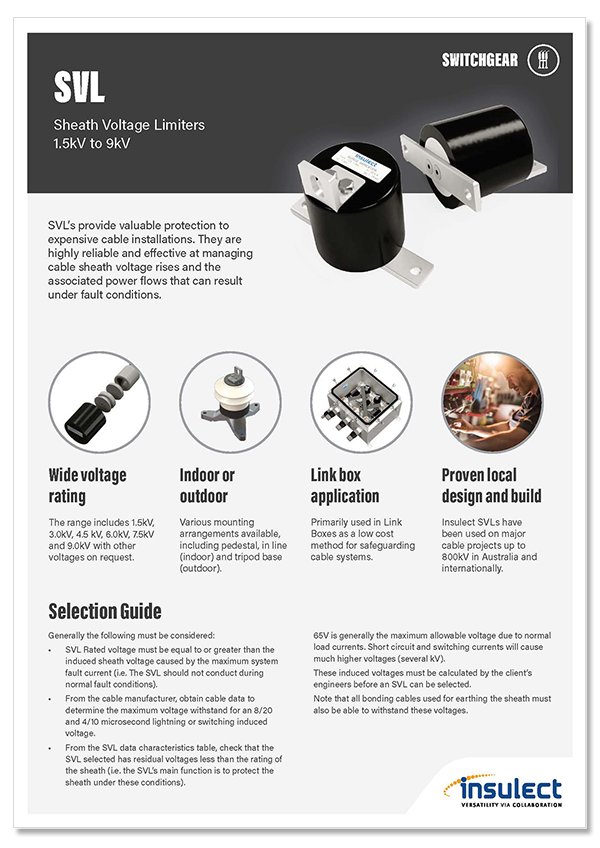Sheath Voltage Limiters (SVL)




Sheath Voltage Limiters (SVL)
SVL’s provide valuable protection to expensive cable installations. They are highly reliable and effective at managing cable sheath voltage rises and the associated power flows that can result under fault conditions.
Used in Link Box to protect Cable up 800kV throughout Australia and international markets
Manage cable sheath voltage rise and the associated power flows that can result under fault conditions
Suitable for Indoor or Outdoor applications
Available in 1.5kV, 3.0kV, 4.5kV, 6.0kV, 7.5kV, 9.0kV and 12.0kV voltages
Discharge Class 20kA
Tailored to customer requirements
SHEATH VOLTAGE LIMITER (SVL) SPECIFICATION
SVL’s provide valuable protection to expensive cable installations.
They are highly reliable and effective at managing cable sheath voltage rises and the associated power flows that can result under fault conditions. SVLs are commonly used in Link Box applications.
Wide voltage rating
1.5kV, 3.0kV, 4.5 kV, 6.0kV, 7.5kV and 9.0kV with other voltages on request.
Indoor or
outdoor
Various mounting arrangements available
Link box application
Primarily used in Link Boxes as a low cost method for safeguarding cable systems.
Local design and build
Used on major cable projects up to 800kV in Australia and internationally.
LINK BOX SELECTION GUIDE
Generally the following must be considered:
SVL Rated voltage must be equal to or greater than the induced sheath voltage caused by the maximum system fault current (i.e. The SVL should not conduct during normal fault conditions).
Obtain cable data from the cable manufacturer to determine the maximum voltage withstand for an 8/20 and 4/10 microsecond lightning or switching induced voltage.
Using the SVL data characteristics table, check that the SVL selected has residual voltages less than the rating of the sheath (i.e. the SVL’s main function is to protect the sheath under these conditions).
65V is generally the maximum allowable voltage due to normal load currents. Short circuit and switching currents will cause much higher voltages (several kV).
These induced voltages must be calculated by the client’s engineers before an SVL can be selected.
Note that all bonding cables used for earthing the sheath must also be able to withstand these voltages.



















